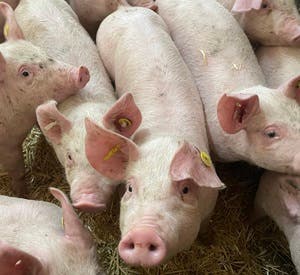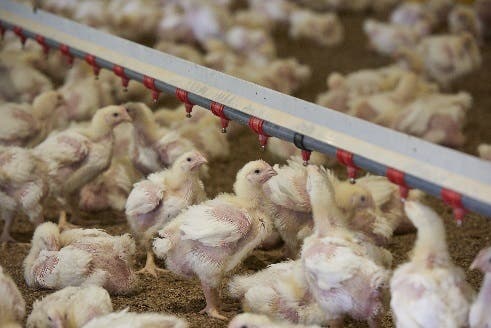Lifecycle assessment shows feed enzyme reduces pig and broiler carbon footprint
Studies have shown that incorporating a feed enzyme into broiler and pig diets can reduce carbon footprints by up to 3.3% for broilers and 4.2% for pigs1.
When incorporated into diets, Elanco’s Hemicell™ XT enzyme breaks down the performance-impacting compounds, β-mannans, resulting in less wasted energy and enhanced Intestinal Integrity. This therefore reduces feed costs while improving animal health and product sustainability.
Alex Sly nutritional advisor at Elanco, explains that a lifecycle assessment (LCA) was carried out to evaluate the product’s contribution to reducing carbon emissions.
“The LCA looked into two key areas. The carbon emissions produced during the manufacturing of Hemicell XT, as well as the environmental impact on calorie removal within livestock diets,” she says.
This type of insight is becoming increasingly essential for producers and processors looking to demonstrate their environmental credentials to retailers, committing to carbon emission reduction targets.

To reach these net zero targets, Ms Sly says there is not a 'one size fits all' approach and a series of incremental improvements will be required, with Hemicell XT playing a valuable part in developing a solution.
Explaining the results from the LCA, she says: "We carried out the study in line with the ISO 14040/14044 standards*, where we compared two rations of feed, a control ration and one which was reformulated to include Hemicell XT.

"By including Hemicell XT in the broiler feed ration, we were able to remove 60 kcal/kg ME, which led to a reduction in carbon footprint ranging from 2.7 to 3.3%1," explains Ms Sly.
"This trend was also experienced in pig diets, with 55 kcal/kg ME able to be removed, resulting in the carbon footprint of the reformulated diets dropping by 1.2 to 4.2%1, depending on the scenario.”
The carbon footprint of 1kg of chicken is approximately 3.3 kg CO2eq1. Around 70% of these carbon emissions are generated by feed1, which demonstrates the significance of reducing the carbon footprint of the ration on the overall footprint of the meat product.
The trial results showed that Hemicell XT can reduce the footprint of compound feed by 3%, and producers can benefit from a 2% carbon reduction in the final meat product1.
This is a substantial figure in terms of meeting many retailer-set targets. For example, many producers will be required to reduce carbon emissions by 25% by 2030.
Ms Sly adds that producers can work with their Elanco representative to understand how Hemicell XT can benefit their business and contribute towards a reduction in their carbon footprint.
1. Blonk consultants. (2023) A lifecycle assessment (LCA) of both Hemicell production and the comparative performance of feeds containing it. Data available upon request. Int ref no. 23491
* SO 14040/44 (ISO, 2006) (ISO, 2006), Product Environmental Footprint of the European Union (PEF) PECFR feed for food producing animals (European Commission, 2018), FAO LEAP (livestock environmental assessment and performance) feed additive guidelines (FAO, 2020)